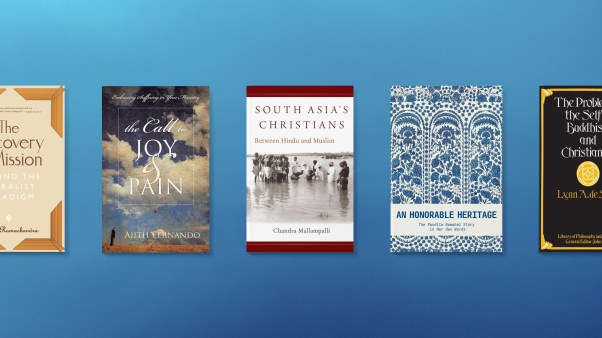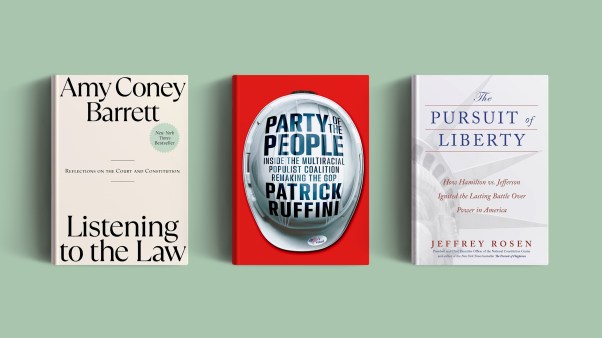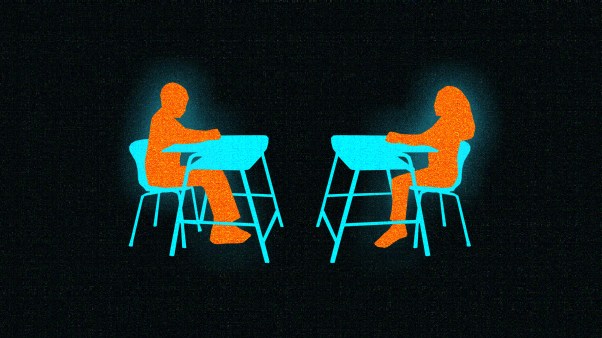In an interview with Ann Coulter in the June issue of Vanity Fair, glitterati journalist George Wayne concludes his banter with the long-legged ogress by suggesting that she get herself a rabbit. Too bad he does not mean the animal.
In a country whose sex shops teem with bunny-shaped toys; whose porn devourers look for the rabbit icon; whose fashion designers dress models in dyed rabbit-fur ponchos and angora sweaters; whose rabbit rescue shelters are flooded with new animals a month or two after Easter, when they are found wandering suburban parks; where women at baby showers fawn over bunny-themed nursery sheets and touch-me books for toddlers made with rabbit fur; where sophisticated restaurants serve lapin and conejo stews—in spite of all these rabbits everywhere, we who live here know next to nothing about the lagomorpha.
So we—most of us—miss out.
Few have had the thrill of watching a bunny do the binky—a supreme tribute from rabbits to their creator, as if to shout, with their whole bodies, “God, life is good!” Have you ever witnessed this spur-of-the-moment dance, in which rabbits leap up, spin in mid-air, and land facing the opposite direction—sometimes several times in a row? And how many of us have received the soft little kisses with which these affectionate and social creatures are happy to groom, comfort, and even, if necessary (as is often in my case), wake up their human companions?
Have you seen the way rabbits, upon hearing the soothing voice of their owner, forget the sixth sense inside their heads that warns them, “Be alert, you are, first and foremost, a prey animal! Don’t tease hawks with your white belly!”—and flop over on their side, rolling back their eyes in bliss? How many Playboy bunnies have heard the chatter of a euphoric rabbit’s teeth? Who among the lapin stew epicures has put a rabbit in a trance—his belly up and his lip twitching as he frolics in bunny dreamland, all trust and no fear? And how many touch-starved loners have received the consoling warmth of the velveteen body, propped against their backs or legs? How many pet store owners know the chasm that separates rabbits from rodents? Do they pay attention to the remarkably loud thumps rabbits make when scared or angry?
Not many of us, in this country overflowing with bunny kitsch, know what rabbits want.
Those who do are likely to belong to the far-flung community of rabbit-lovers who let these curious creatures run free in their homes. We know they can be litter-trained in under a week and that they’re meticulously clean. We know that most outdoor bunnies live about two years, while—if properly taken care of—house rabbits can live ten years or more. We buy lush green timothy hay for them in bulk and feed them dark greens. We cover the electric cords in our homes, knowing that they send irresistible subliminal messages to the bunny brain: “Must bite! Must bite!” At Easter, we (not just the Christians among us) try to distract our friends from buying their children rabbits. We try hard to repress condescension and instead smile and nod when well-meaning people tell us that they, too, had a bunny—adding, sometimes with a slight shadow of reproach, “When I was a child. In a hutch, out in the yard.” To us, that’s like hearing an owner of a German shepherd say that she never takes the dog out for a walk. No, it’s worse than that—rabbits kept outdoors are not only unexercised but also lonely and stressed (this has been scientifically demonstrated), and they often die from either a heart attack or direct assault during a night visit from a predator.
We lagomorph lovers learned all these things from people like Margo DeMello, president of the House Rabbit Society, and rabbit behavior educator and journalist Susan E. Davis. Their book Stories Rabbits Tell: A Natural and Cultural History of a Misunderstood Creature (Lantern, 2003) is the most comprehensive English-language study of how rabbits arrived in our backyards and our homes as pets and pests and toys and furs and food and sex symbols. The authors introduce us to biological marvels such as the curiosity Moses mentions in Leviticus and Deuteronomy: rabbits chewing their cud (not excrement but—from a separate pipe—undigested and seemingly useless material). The digestive system of rabbits showcases both divine whimsy and pragmatism. If the hay or other food rabbits ingest doesn’t contain the necessary B vitamins and protein, no problem: rabbits will produce their own. (Does it make me nutty if reading about this recycling system for the first time evoked spontaneous worship?)
In Stories Rabbits Tell, we learn about the first known defenders of rabbits. Among them was William Cowper, the 18th-century poet and hymn-writer. He was severely depressed and suicidal much of his life, and John Newton of Amazing Grace fame took him into his home to watch over him. But Cowper’s three hares also lifted his spirits. Davis and DeMello dug up a letter that he sent to Gentlemen’s Magazine, explaining his opposition to blood sports, so fashionable in the England of his day:
You will not wonder, Sir, that my intimate acquaintance with these specimens of the kind has taught me to hold the sportsman’s amusements in abhorrence; he little knows what amiable creatures he persecutes, of what gratitude they are capable, how cheerful they are in spirits, what enjoyments they have of life, and that impressed as they seem with a peculiar dread of man, it is only because man gives them peculiar cause for it.
What would Copwer think of the way commercial breeding and meat industries treat rabbits today? Thanks to the usda’s Humane Slaughter Act, most animals we eat have to be stunned in order to be rendered unconscious before they are killed. Not rabbits. They aren’t classified as livestock, but as poultry, which are excluded from the act. Chickens! So they suffer, demonstrably, when dying. I’ll spare you the depiction. Suffice it to say that I cannot imagine a reasonably compassionate carnivore, after reading a straightforward account of the way many rabbits die, going out to enjoy a conejo dish at a tapas restaurant. But as troubling as the inhumane killing of commercially raised rabbits can be, it was the account of their living that made me weep.
While DeMello and Davis do not condemn those who eat rabbits or use cosmetics whose makers test their products on bunnies, they describe in awful detail the life-defying conditions that exist in the meat, fur, vivisection, and pet industries. It’s obvious that too many rabbits spend their existence in filth, stress, and pain, without the freedom to do a binky or run (running is, after all, God’s gift to rabbits) or even stand up on their hind legs or stretch their muscles.
Even “people who keep rabbits in hutches in the back yard don’t get to know a rabbit’s true repertory,” DeMello and Davis write—”there’s just not enough stimulation or physical space for the rabbit to really let go, and the keeper rarely has enough time to really observe the animal’s behavior.” No wonder “most people approach rabbits as if they were stuffed animals: cute but not capable of much, except maybe eating carrots and twitching their noses.”
There’s so much more than that. Take the behavior of Puszek, one of my two bunnies, right now. It’s 1 am, two hours past my usual bedtime, and Puszek is making noise by tossing my shoes up in the air so that they fall on the hardwood floor. Is he just being a dumb bunny? Or is he saying, “What are you doing still up?”
Agnieszka Tennant can almost smell God when she nuzzles the red fur of her mini-rex rabbits Puszek and Miodka (pictured above). This fall, she will begin an international relations program at University of Chicago, hoping to figure out why such a devoutly churchgoing country as her native Poland is so corrupt.
Copyright © 2006 by the author or Christianity Today/Books & Culture magazine. Click here for reprint information on Books & Culture.









